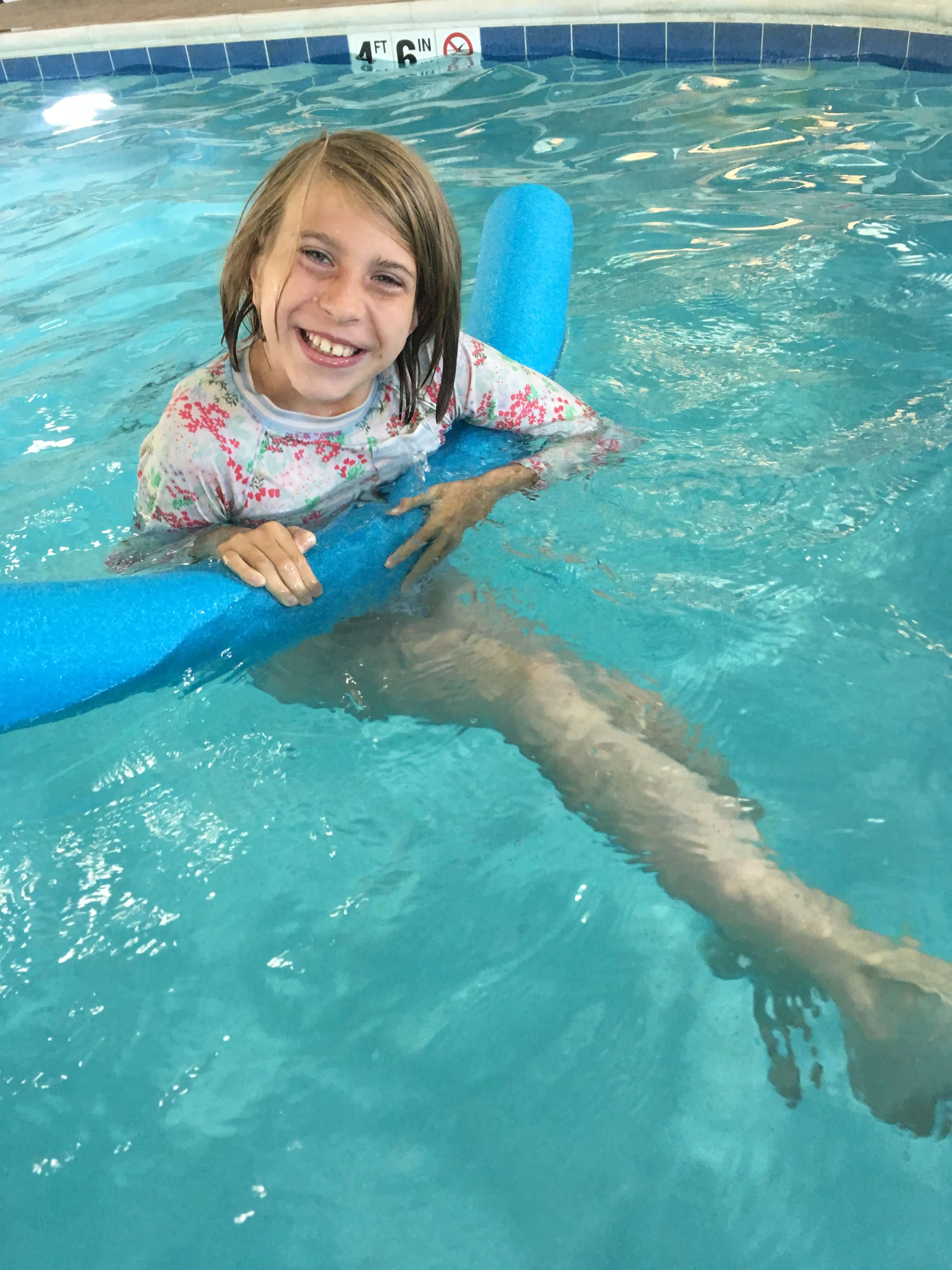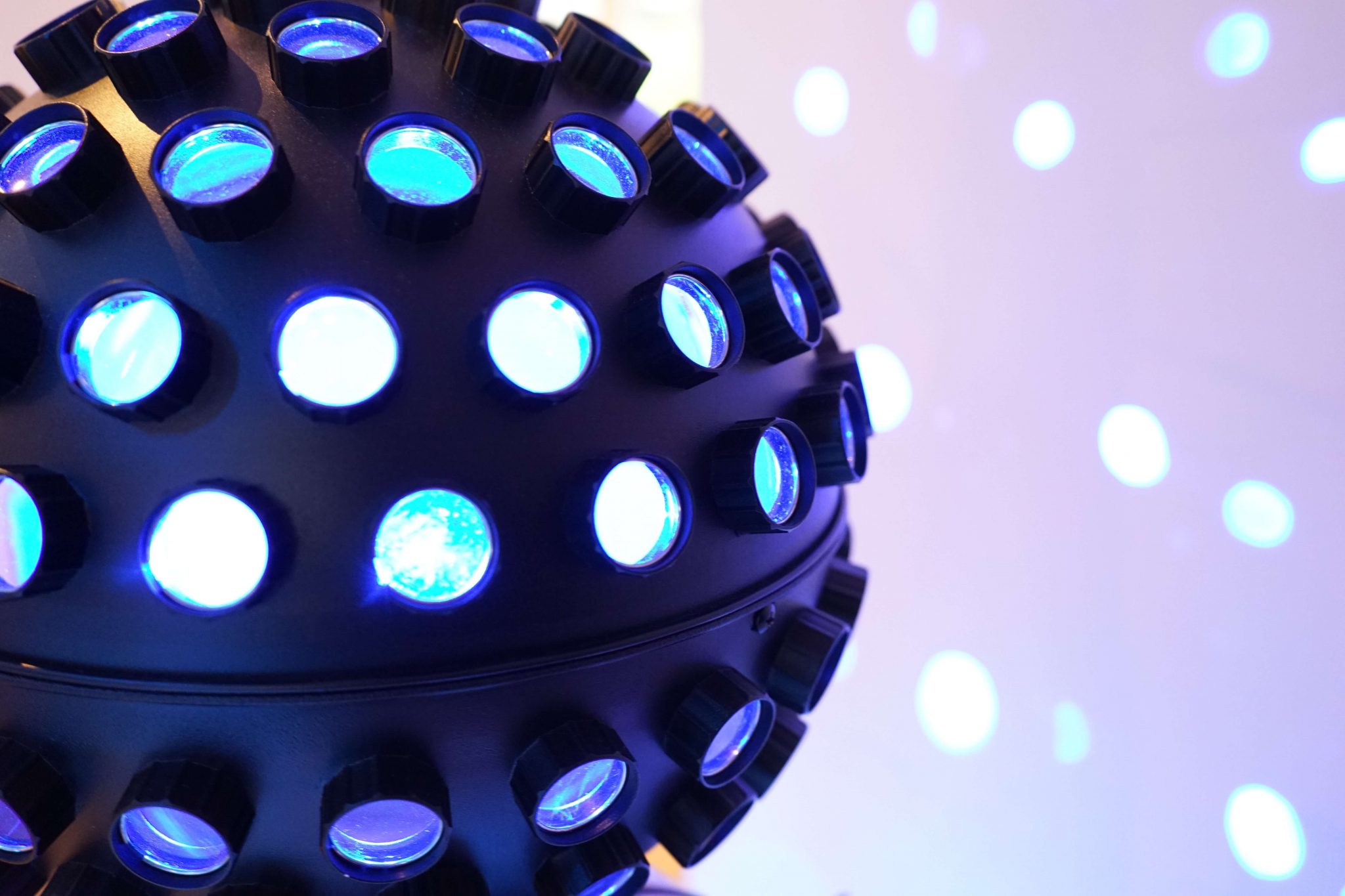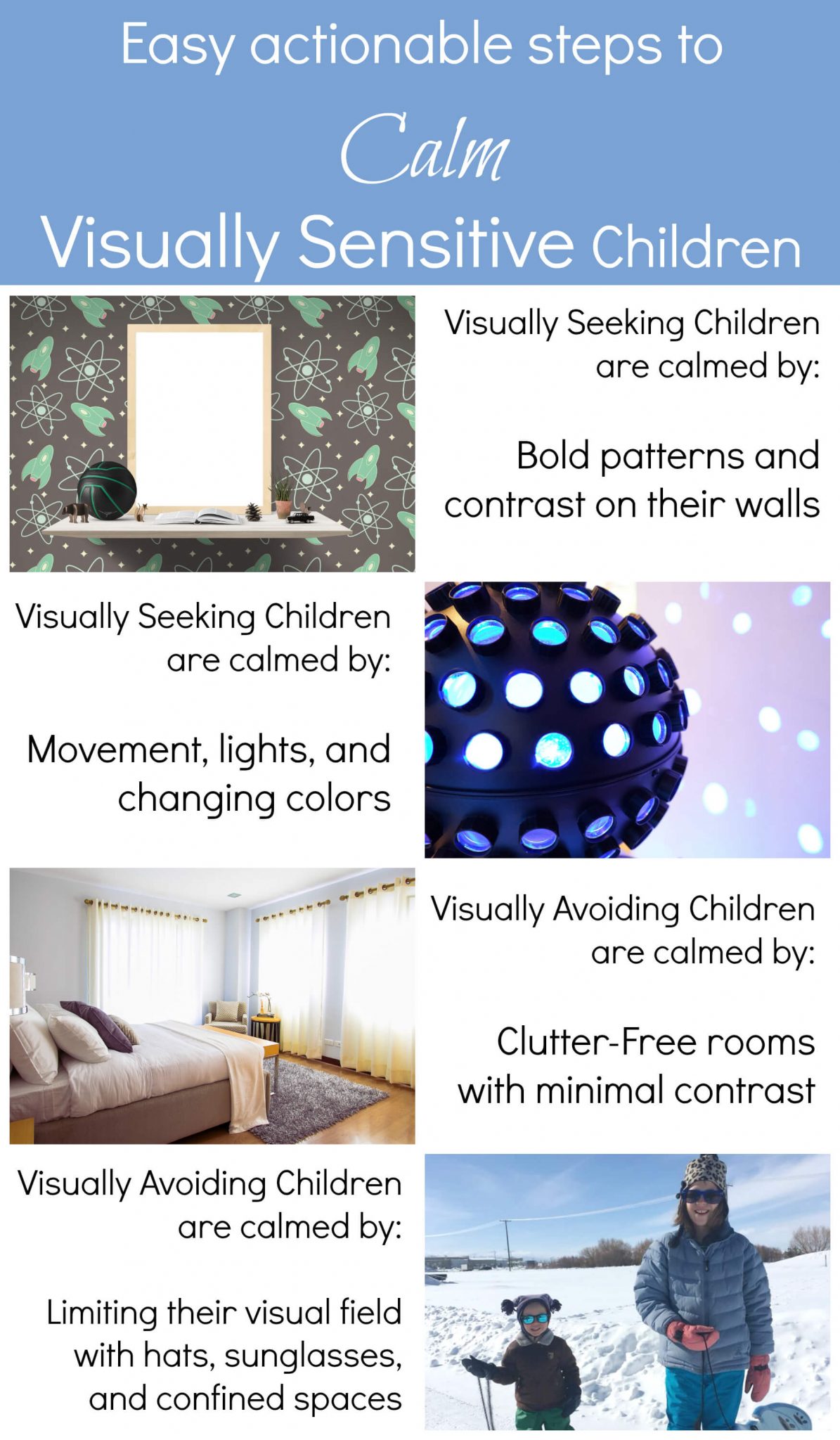
Sensory activities, and providing a varied sensory diet is one of my favorite ways to reduce children’s stress, minimize meltdowns, promote learning, and increase household happiness. Here we are going to take a look at how visual stimulation calms down children who are visually seekers- one of the components of sensory processing disorder.
Your child might not necessarily have a disorder, it may be just that they have preferences that help keep them calm. Once you realize your child’s preferences in this area, you will be able to create a truly ideal rest environment, play environment, and learning environment- helping them thrive!
Never heard of sensory integration issues?
Click here to see how they may be causing your child’s meltdowns.
Not sure where your child falls on the sensory spectrum?
Take the sensory quiz here.
Visually avoidant and visually seeking children are two sides of the same coin – they both are processing visual sensory information differently than most of the rest of us. We talk about visually-avoiding children and their sensory needs here.
⇢⇢⇢ Already know all this and want to skip to the tips? Click here!

Sensory issues are increasing
This current generation of children is experiencing sensory issues at a much higher rate. I suspect it’s due to the amount of toxins in our food supply and environment, overuse of antibiotics, premature births, and generational nutrient depletion. We will go more into this another time, but for now, we treat sensory issues symptomatically.
Yes, the GAPS Diet did help my daughter’s sensory issues enormously, and she has much less now at 11 than she did as a toddler, and we saw a rapid improvement in sensory issues after just 3 days on the GAPS diet as I talked about in our Autism & GAPS video.
Parents can work with their children’s sensory needs during daily activities and in their home environment.
This means we provide needed sensory input, or take away other sensory input so that these children are less stressed and can go about daily activities like learning, playing, and resting.
Occupational Therapy
If your child has severe sensory issues, or is on the autism spectrum, it’s likely that you are working with an occupational therapist. Your occupational therapist should be able to help you come up with more ideas to help your individual child.
If you’d like to learn more about occupational therapy for sensory integration dysfunction, you can watch my video here.
Caretaker frustration
I’ll be honest- having a child with sensory needs, especially if they are severe, can be incredibly frustrating as a caretaker. This goes for babysitters, parents, teachers, and so on.
Occasionally I have seen adults at the end of their rope use sensory activities and needs as a way to punish or reward a child. This can be trying to force a solution onto a melting down child, “HERE! I bought you this flashlight, now SIT DOWN”, or subjecting a child who is sensory avoidant to a sensation they hate (putting a child who hates the sensation of touching sand in a sandbox, etc).
This is absolutely not okay. Sensory activities are meant to be a gentle regulating activity. They are not to be used in anger, as punishment, or to solve all your problems. You cannot blame the child, it is out of their control.
Children are very sensitive to the emotions of their caretaker, and sensory activities done while the caretaker is angry, stressed, or overwhelmed will backfire. If this is the case, it is better to get the child to a safe and preferred environment, and calm yourself down first.
Parents who are constantly helping their children regulate are at increased risk for burnout themselves. Taking time for self care is an important way to help yourself, and your child.
Invisible Needs
Sensory issues, or being overly sensitive are one of those disabilities, or needs, that are invisible to the common observer. This can be stressful for parents, as they are seen as coddling or catering to these children. In combination with frequent meltdowns, a frequent conclusion can be made that you are spoiling your children, and that is why they are melting down.
Just as getting your child with type 1 diabetes insulin isn’t giving them ‘special treatment’ adjusting sensory input to calm your sensory seeking or sensory avoiding child is about fulfilling their needs not their wants.
Thankfully, more and more people are understanding when we say ‘it’s a sensory issue’. Sharing information like this on social media can help as well, and educating those who are around you often.
Visual Seeking Children
There is a tendency to be more willing to accommodate sensory-avoidant children more than the seeking children. But accommodations for visually seeking children is just as important to their well being as it would be if they are avoidant. These children crave color, contrast, and light.
Think of how dysregulated you would feel if you only saw things through a dark fog all the time- you would crave crisp clear images and bright light, wouldn’t you? That is how this sensory need is for these children.
Seeking behaviors often look like hyperactivity, and lack of impulse control. While hyperactivity and impulse control issues aren’t always from an unmet sensory need, at times there is a sensory component, and a few simple changes to the child’s environment can reduce undesired behaviors substantially.
Faux Seeking
One thing we run into often is children who are drawn to bright bold color, movement, and flashlights, but rather than calming them down, this stimulation amps them up. This isn’t a visually seeking child, this child is probably visually neutral or avoidant, and is overstimulated by all this visual activity. I have one of these children ;)
Children have a hard time making choices about what is best for them, whether that’s nutritionally (no, you may not eat candy for breakfast), safety reasons (no, you may not swim in the river when it’s 34 degrees out!) and their sensory diet can be the same way.
As parents, this is another thing we need to take charge with. It doesn’t need to be a power struggle. In the case of a ‘faux seeking’ visually avoidant child your answer can be a calm ‘yes, you would like neon pink and purple stripes on your wall, but we’re not going to be doing that.’

Outside the home
Children that are visually seeking are regulated and calmed by typical ‘kid themed stuff’. Loud bold colors with lots of movement is what these children thrive around! This can be a lot of fun at amusement parks, fairs, movie theaters, and in typical elementary school classrooms.
These children will have more trouble sitting through an outside concert, though purchasing a balloon animal, bringing a pinwheel, or letting them fiddle with a rubric’s cube can help them sit still.
Anything that flashes, is shiny, or has lots of colors will be loved. If you’re going somewhere more visually calm, bringing something more visually flashy for the child to play with can help keep them calm.
Fireworks, kid-themed restaurants, and even fast food restaurants are preferred. Please note: These children certainly do not need fast food, but if your child is melting down, and you know they are visually seeking, taking their packed lunch into the nearest fast food restaurant with its bright lights, bold colors, and checkerboard floor will be regulating for a child like this.
The children’s dentist office that is painted in primary colors with kites hung from the ceiling, the classroom with the teacher who dresses like Ms Frizzle, or the children’s museum that is covered in textures and colors will all be calming and satisfying to these kids.
Typical kids concerts or events will be a lot of fun for these kids. Disney on ice may be a little too calm. If your child is tactile avoidant along with visually seeking, don’t be surprised if they want to watch, not participate, and know that even without them riding a single ride, they are enjoying themselves immensely at these activities!
Letting these kids look out the window can help them concentrate in the classroom and during homework time.
And yes, the trendy fidget spinner is a great (silent!) provider of visual stimulation for kids craving it.
Dressing the child in bright contrasting colors, and/or choosing a care provider (nanny, babysitter, teacher, etc) who is more drawn to dressing in bright colors will be helpful for this child.

Inside the home
A visually stimulating environment can be a LOT of fun to pull off for these kids! All those color patterns, shapes, and textures can be fun to work with. If you have a child who is visually seeking sharing a space with people who are visually avoidant, see our tips for that at the end of this article.
Bold colors on the wall, especially in this child’s bedroom, will have a calming effect. Consider bright posters, patterned paint, and contrasting paint/trim/rugs on the floor.
TV on all the time, but on mute can provide ‘background visual stimulation’ without the background noise.
Projectors that the child can control to display pictures on walls are a favorite toy. Letting them play with them as they go to sleep can help calm these children so they fall asleep more easily.
Disco balls, flash lights that the child can control, again, in the bedroom or play area, will be loved by this child.
The goal is freedom
If you are new to the sensory processing world, this can all be overwhelming and confusing. Keep in mind that our goal is to make slight changes to our children’s environment that helps them to remain calm and resist stress. Don’t feel like you need to change your home’s decor, your child’s dentist and doctor, and all the clothes everyone in the family wears right now in order to have a calm child!
As you make choices about activities to put your child in, how to decorate their room, purchase birthday gifts, and which schools to attend- you can keep their sensory preferences in the back of your mind to assist in this decision.
The goal is to increase awareness so that you can make simple changes that don’t change your life a whole lot, but DO accommodate your child’s sensory needs and preferences.
Read more:
So That’s Why They’re Melting Down! A Parent’s Guide to Sensory Processing
Calming Activities for Visually Avoidant Children
30 Gift Ideas for Sensitive Children
Holidays, Traditions, and the Sensitive Child
You Know I have a Child with Special Needs, but Here are 10 Things I Probably Have Not Told You
Learn how to heal leaky gut


60-page ebook of all my best GAPS Diet (Gut and Psychology Syndrome) articles all in one place.


